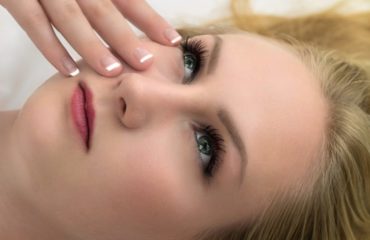
Microdosing is a beauty trend that all skincare fans should know about.
Most likely, at some point in our lives, each of us went overboard with the active ingredients in our care. We are only guilty of striving for smoother, more radiant skin. As children in a bakery, we are greedy for new things, we buy and accumulate many products in the hope that they will work quickly and efficiently. But in reality, this sophisticated approach can cause irritation, redness, acne, and dryness – these are just a few unpleasant side effects. This is why the latest buzzword in skincare, microdosing, is fast becoming one of the hottest trends in the industry. And it can pay off for skin health in both the short and long term.
“The practice of microdosing has been around for decades,” says Dr. Jason Thomson, Skin + Me Medical Director. – It is known, first of all, in relation to psychedelic drugs such as LSD and psilocybin contained in “magic mushrooms”: they are taken in micro doses. Studies have shown that when taking micrograms (one millionth of a gram) of psychoactive substances, users do not experience strong effects such as hallucinations and feelings of elation, but instead report improved creativity, concentration, and mental health. In the past few years, the same concept has been adopted in the skin care industry. “
Rather than overloading the skin with the highest possible concentration of active ingredient, using a lower percentage – about one tenth – and regular use (daily, not every few days) provides better tolerance, keeping skin plump, healthy and radiant while enjoying all the benefits. ingredients. André Condit, Formulator and Founder of Spectacle Skincare, calls this technique a “therapeutic” way of delivering key ingredients that can be easily overdone, such as retinoids, exfoliating acids (eg azelaic, glycolic, and salicylic – any that may cause side effects) and vitamin C. He says this is the best way to prevent “adverse side effects such as flaking and redness” and gradually increase the skin’s tolerance.
“It’s very common to see people overdoing several highly effective treatments in one go,” he adds. – The inflammatory response is not at all what we are striving for. The path to skincare must be a slow and routine marathon to achieve lifelong results. “
Another important thing to look out for is that skin care requires a systematic approach. “Applying retinoids twice a week and layering them is often advised can be difficult, so using a lower dose makes it easier to transition back to normal daily care,” says Dr. Thomson. “If you continue to pause and start over with a concentration that you cannot bear each time, you will not be able to continue the treatment and will most likely find yourself in a worse situation than at the beginning of the course.”
The good news is that a number of brands make microdosing affordable and easy. For example, Skin + Me is a subscription-based skincare brand that connects the patient with dermatologists and pharmacists and offers a personalized approach, prescribing the optimal active ingredients for him and his specific skin type – with small percentages if necessary. In addition, skincare boosters are worth looking at, which are designed to be added to a regular moisturizer (but can be used alone) and often have a lower percentage of active ingredients.
According to beautician and Skndoctor founder Dr. Ewoma Ukelege, microdosing can benefit all skin types, especially sensitive skin. “Even at low dosages, ingredients like retinol have tremendous benefits, so microdosing is a great way to see those benefits without irritation,” she says. She also thinks this is a great starting point for those not currently using active ingredients.
The only thing she warns about is that there are certain ingredients that cannot be administered in micro doses. “Definitely don’t inject micro-doses of SPF! The right amount for the face is about the size of a teaspoon. “




